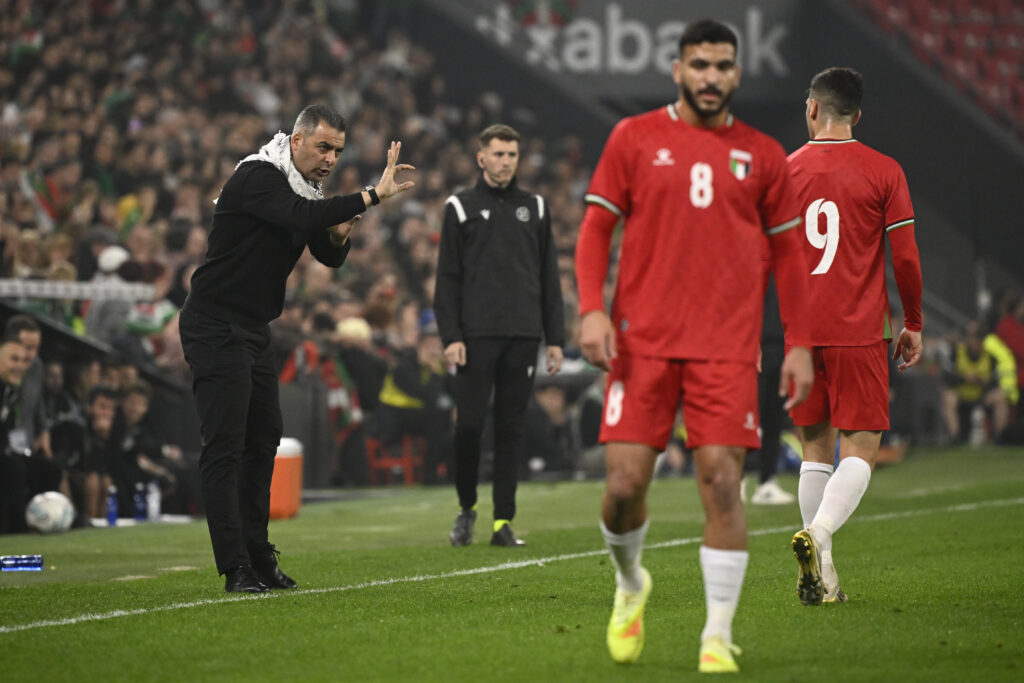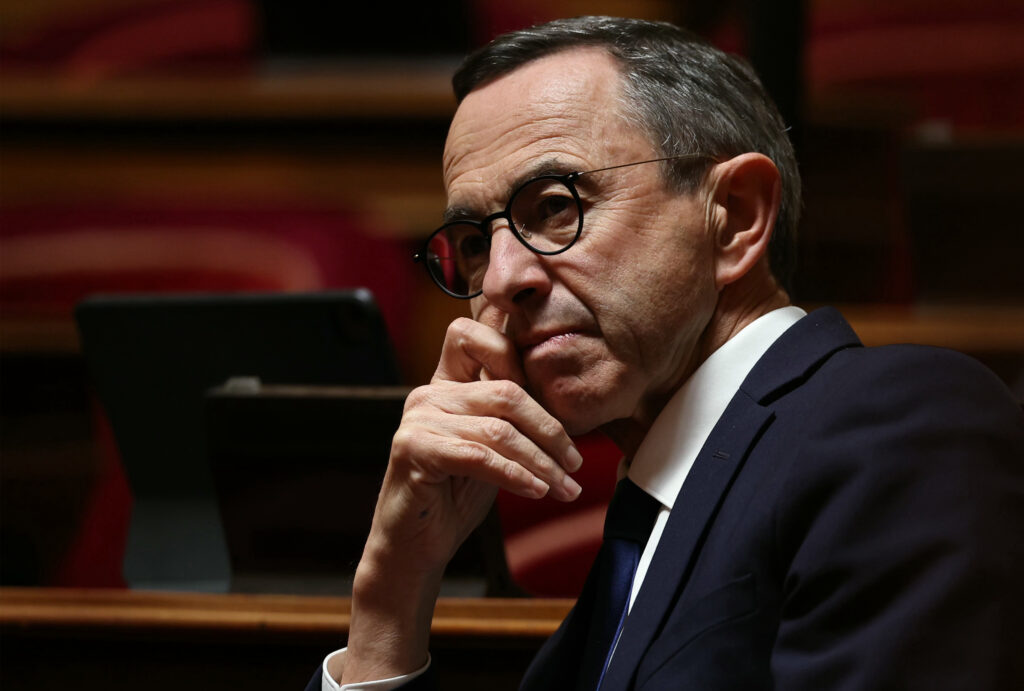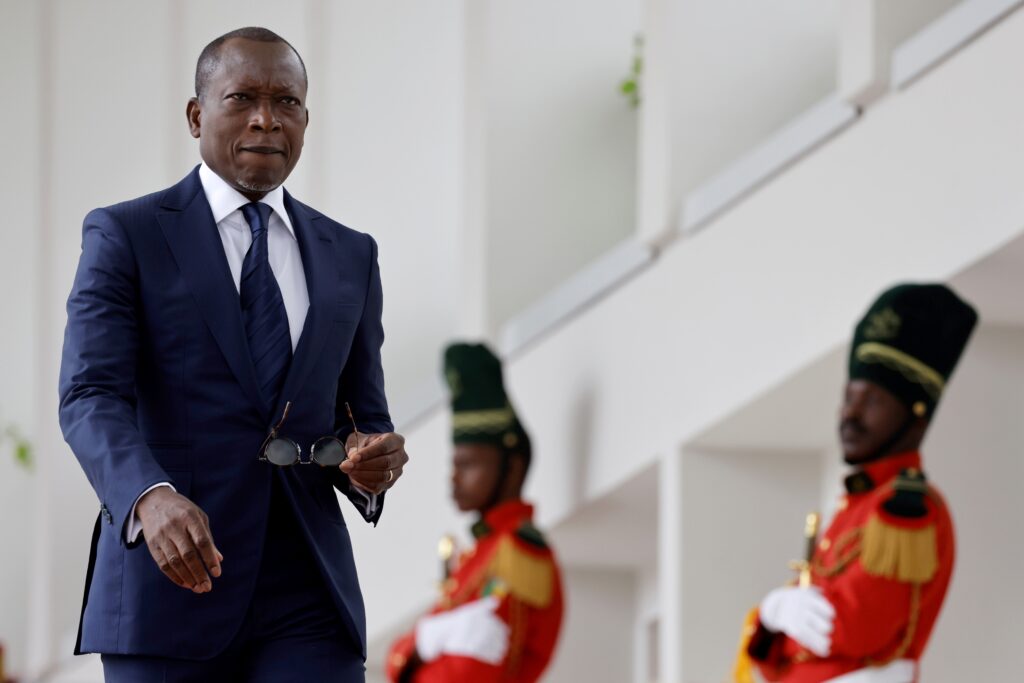L’entraîneur de l’équipe de foot palestinienne coaché par sa mère depuis une tente à Gaza
Ehab Abou Jazar entraîne l’équipe de foot palestinienne à Doha. Mais c’est sa mère, depuis la tente où elle vit déplacée à Gaza, qui le motive, l’inspire et le conseille.La guerre à Gaza, déclenchée par l’attaque sans précédent du Hamas en Israël le 7 octobre 2023, a mis un terme au championnat de foot et aux activités des clubs dans le territoire palestinien dévasté, et les athlètes en exil se rongent les sangs pour leurs familles restées sur place. Mais la mère de l’entraîneur, Oum Ehab, refuse de laisser le conflit obérer les rêves sportifs de son fils, et lui donne conseils et encouragements par téléphone depuis sa tente à Gaza, où elle vit désormais après que la maison familiale a été détruite, raconte-t-il à l’AFP.Mère et fils échangent lorsque le réseau le permet. “Elle et le reste de la famille font tout pour regarder nos matches à la télévision. Ils anticipent l’utilisation du générateur, et l’essence à acheter”. “Elle ne me parle de rien d’autre que de l’équipe et du championnat!” sourit l’homme de 45 ans, qui vit à Doha. “Elle me demande des nouvelles des joueurs, qui sera titulaire, qui sera absent, me questionne sur la stratégie et le moral de l’équipe”. Ehab Abou Jazar, un ancien arrière-gauche, espère insuffler l’optimisme maternel à ses joueurs.”Nous disons toujours que nous sommes une petite famille palestinienne” représentant l’ensemble de la population, explique-t-il. “Cela nous met bien sûr la pression, mais c’est une pression positive”.- “La résilience dans les gènes” – L’équipe nationale palestinienne est au 96e rang du classement FIFA, et ses espoirs de participer à sa première Coupe du monde en juin prochain se sont évanouis cet été après un match nul face à Oman en Jordanie.Les joueurs, dont la plupart n’ont jamais mis les pieds à Gaza, n’en rêvent pas moins d’atteindre les quarts de finale dans la Coupe arabe de la FIFA.L’équipe palestinienne affronte ce dimanche la Syrie dans le dernier match de leur groupe, et un nul suffirait pour lui permettre de se qualifier et de réaliser un exploit sans précédent.Cela prouverait au monde que les Palestiniens peuvent “exceller dans tous les domaines” s’ils sont dans de bonnes conditions, espère M. Abou Jazar, qui a fini sa carrière de joueur en 2017 avant de devenir sélectionneur de l’équipe nationale en 2024.Avec ses joueurs, il a suivi le conflit à Gaza depuis Doha, dans l’angoisse pour ses proches, déplacés comme la majorité de Gazaouis. “C’était une pression mentale, particulièrement au début de la guerre”, dit-il, alors qu’une fragile trêve est en vigueur à Gaza entre Israël et le Hamas depuis le 10 octobre, sous pression du président américain Donald Trump.”Nous ne comprenions pas ce qui se passait. Mais nous avons la résilience dans les gènes”, assure le coach. “Si nous renonçons, nous disparaîtrons en tant que peuple”.Lorsque l’équipe joue, elle a le sentiment d’apporter un peu d’air à la population gazaouie, épuisée par deux ans de guerre. “C’est ce qui nous fait tenir debout et nous motive, apporter de la joie à notre peuple”, dit le quadragénaire. “Tout ceci nous pousse à nous battre sur le terrain, jusqu’à notre dernier souffle”.
Budget de la “Sécu”: Retailleau dénonce “un hold-up fiscal” et appelle les députés LR à ne pas voter pour
Le président des Républicains, Bruno Retailleau, a qualifié dimanche le projet de budget de la Sécurité sociale de “hold-up fiscal”, “social” et “démocratique”, appelant les députés LR à ne pas voter pour le texte mardi à l’Assemblée nationale.C’est “un hold-up fiscal” avec l’augmentation de la CSG, “un hold-up social puisqu’on ne fait pas la réforme de la retraite” et “un hold-up démocratique parce que jamais le pays n’a été autant à droite, jamais un gouvernement, une politique n’a été autant à gauche”, a déclaré l’ex-ministre de l’Intérieur sur BFMTV. “Ce texte n’est pas votable”, nos députés “auront le choix de l’abstention ou de voter contre”, a-t-il ajouté.Après avoir adopté, vendredi, le volet recettes du projet de loi de financement de la sécurité sociale (PLFSS) pour 2026, les députés doivent voter mardi sur la partie dépenses, puis sur l’ensemble du texte. Le Premier ministre, Sébastien Lecornu, “s’est mis dans les mains des socialistes” avec notamment la suspension de la réforme des retraites et le renoncement à l’article 49.3 de la Constitution pour faire adopter sans vote les budgets, a assuré M. Retailleau. Le vote de mardi reste très incertain à cause des divisions au sein même de la fragile coalition gouvernementale.Mais pour l’ancien locataire de Beauvau, il n’est pas dit qu’il sera rejeté au vu, dénonce-t-il, des “manœuvres de couloirs” et des “petits compromis de l’ombre”.Concernant son départ fracassant du gouvernement début octobre, M. Retailleau a tenté de se justifier.”J’avais senti que tout partait à gauche”, a-t-il déclaré, déplorant aussi qu’Emmanuel Macron ait “repris la main sur Matignon”, en nommant un de ses proches, Sébastien Lecornu, à la tête du gouvernement.Le président de la République “devrait prendre du recul parce que les Français l’ont désavoué” lors des législatives anticipées de 2024 qui ont suivi la dissolution de l’Assemblée nationale, a relevé le président des sénateurs LR. Il doit “se mettre en retrait”, a-t-il martelé.
#MeTooÉcole: un collectif exhorte Macron à “protéger” les enfants
Un collectif citoyen de parents d’élèves exhorte Emmanuel Macron, dans une lettre ouverte publiée par La Tribune dimanche, à “protéger” les enfants après une série de signalements d’agressions sexuelles dans des écoles, notamment à Paris. “Nous sommes #MeTooÉcole. La voix de parents, de citoyens, d’enseignants unis dans un même combat: lutter contre les violences faites aux enfants dans les écoles”, peut-on lire dans cette lettre.”Tout commence par des pleurs, des peurs, des cauchemars ou des comportements inhabituels. On relativise… jusqu’au jour où une information révèle que ces changements sont les conséquences de violences physiques, morales ou sexuelles”, ajoute le collectif fondé le 20 novembre.Cet appel à une “prise de parole et des actions fortes”, lancé à la fois au chef de l’Etat et à son épouse Brigitte Macron, survient après une série de signalements d’agressions sexuelles commises sur des enfants dans des écoles maternelles, notamment dans le cadre du périscolaire.”Comment imaginer que l’on puisse confier son enfant à l’école en toute confiance et que de tels actes puissent y être commis ?”, interroge le collectif. “Derrière ces faits, c’est toute une culture de la gifle, du +ce n’est pas si grave+, qui continue de protéger les adultes plutôt que les enfants.” “Les parents se retrouvent désemparés et seuls avec leur incompréhension face à des institutions qui ne veulent pas faire de vagues”, peut-on lire dans la lettre. “L’enfant, lui, est prié de retourner en classe, comme si sa douleur et sa parole n’avaient aucune valeur.”A la suite des révélations, la ville de Paris a annoncé un plan de lutte contre les violences sexistes et sexuelles faites aux enfants dans les écoles, a créé un poste de défenseur des enfants et promis un renforcement de la formation des animateurs du périscolaire.Patrick Bloche, premier adjoint PS chargé de l’éducation et de la petite enfance à la mairie de Paris a assuré dans un entretien à la Tribune Dimanche que des “sanctions disciplinaires à tous les niveaux” seront prononcées à la suite des signalements récents.Il a également “diligenté des saisines de l’inspection générale, menées par un organisme indépendant”. Il a reçu un premier rapport concernant l’une des école – Alphonse-Baudin (XIe arrondissement) – qu’il va “présenter aux parents dans les jours qui viennent”. Des “inspections générales” sont “en cours dans trois des écoles pour lesquelles il y a eu des signalements (Bullourde, Faidherbe et Servan) et “neuf enquêtes administratives sont menées actuellement, une pour chaque école où il y a eu des signalements”.Cette année, à “Paris, à date, il y a eu 36 suspensions d’animateurs, dont 19 pour violences sexuelles sur mineurs”, a précisé M. Bloche. Le collectif #MeTooÉcole réclame un “contrôle systématique” des antécédents des professionnels au contact des enfants, un “protocole clair pour chaque école avec signalement et protection immédiate de l’enfant” ou encore le lancement d’une enquête administrative et d’un audit national des écoles et structures périscolaires, “en commençant par Paris”.
Benin govt says ‘foiled’ coup attemptSun, 07 Dec 2025 12:09:59 GMT
Benin’s government on Sunday said that it had thwarted an attempted coup, after a group of soldiers announced on state television that they had ousted President Patrice Talon.West Africa has experienced a number of coups in recent years, including in Benin’s northern neighbours Niger and Burkina Faso, as well as Mali, Guinea and, most recently, …
Benin govt says ‘foiled’ coup attemptSun, 07 Dec 2025 12:09:59 GMT Read More »




